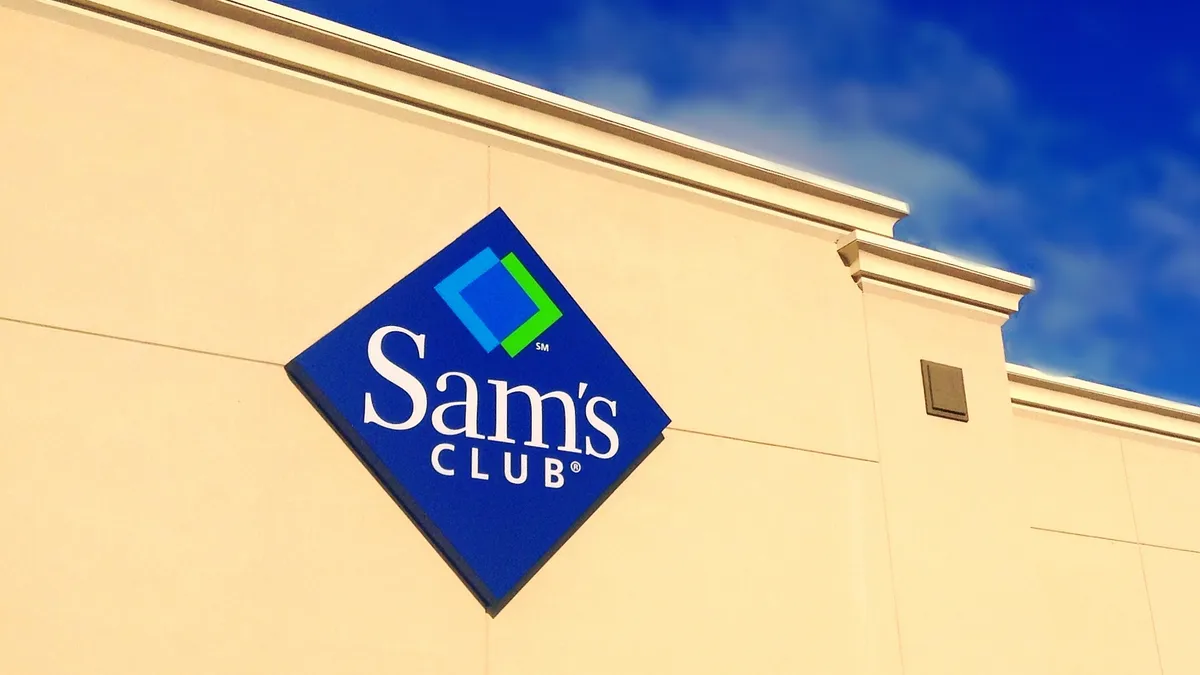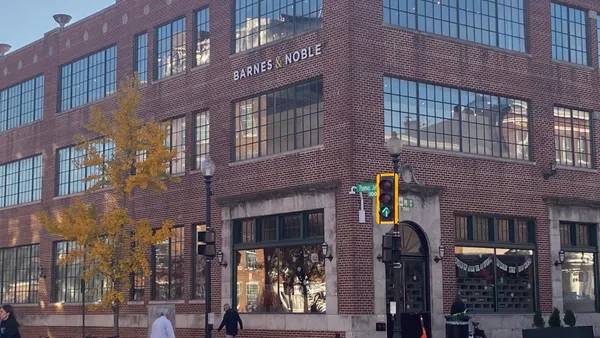Dive Brief:
-
Wal-Mart Stores Inc.’s Sam’s Club warehouse membership unit now supports scan-and-go mobile checkout service in all of its 645 U.S. stores, according to the company’s website. While in the store, a shopper scans each item's barcode through an application downloaded to an iPhone or Android phone; the app keeps a running tally of the items in the cart, and offers checkout and payment capabilties. Shoppers show the receipt on their phone to a Sam's Club employee as they leave, similar to the process with physical receipts, to prove they’ve paid for all of their items.
-
Wal-Mart is also testing the Scan-and-Go service at several Wal-Mart locations, according to TheStreet, although the Dallas Morning News reports the company backed away from a similar pilot earlier this year.
-
Meanwhile, Chase said Thursday that it has expanded its relationship with Wal-Mart to process payments on ChaseNet, the bank's closed-loop network, at 5,000+ Walmart and Sam’s Club locations in the U.S. and at Sam’s Club e-commerce site. Wal-Mart has made lowering credit card payment fees a priority.
Dive Insight:
With Walmart Pay, a feature of its broader shopping app, Wal-Mart has put a lot of emphasis on seamless in-store checkout. But while mobile payment apps can be useful for collection of customer data, it’s not clear how much utility, or even longevity, they have unless they also come with the ability to use coupons, get deals or collect loyalty perks.
The poster child of successful payment apps remains Starbucks, a retailer whose customers tend to stop in regularly, if not daily — a frequency that’s hard to match at other retailers. But Starbucks has also piled on other app features, including loyalty and rewards as well as order-ahead capabilities, to cement its standing as customers' go-to caffeine supplier.
Target’s Cartwheel customer rewards and discounts app, which doesn’t even have a checkout or payment feature (at least for the moment), has been called out as an example of an app that begins to bridge the divide between digital and brick-and-mortar sales in a number of ways.
RSR Research analyst Nikki Baird, for example, singles out Cartwheel as an example of a retailer finally figuring out how to provide the level of personalization and glean the kind of data traditionally relegated to digital sales. “I think digital is teaching retailers how to be more targeted and personalized, but they still have to cross the chasm into stores,” she said in an email to Retail Dive earlier this year. “Target’s Cartwheel is getting them closer, as an example.”
Some experts believe that but the ultimate success or failure of Wal-Mart Stores' growing array of mobile payment applications likely hinges on a series of refinements and innovations that go well beyond their current capabilities and limitations — for example, linking the app to customer checking accounts, instead of just credit cards.
“I habitually go to Whole Foods, and if tomorrow Whole Foods announced an app where all I needed to do was fund it from my checking account and they gave me a 5% discount, I’d do it tomorrow,” Scott Fitzgerald, marketing chief at global commerce services and payments company BlueSnap, recently told Retail Dive. “I think in the end for a lot of this stuff, the only place it becomes disruptive and interesting is when and if Wal-Mart doesn’t allow a credit card to be a funding source.”













